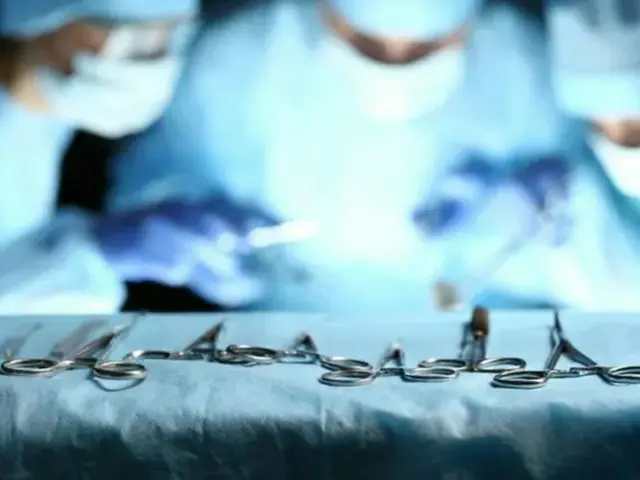It seems that.'' However, the medical community has opposed the increase in the number of doctors, arguing that the cause of the shortage of doctors is the medical disparity between urban and rural areas, and that expanding the capacity of medical schools will not solve the problem.
Difficulties are expected. In 2020, it was reported that South Korea had the lowest number of doctors per 1,000 people among the member countries of the Organization for Economic Co-operation and Development (OECD). Korean National Assembly
According to the ``Health Care Human Resources Statistics and Suggestions for Major OECD Countries'' published by the Legal Affairs Agency in the same year, the number of doctors per 1,000 people in South Korea is 2.3, which is the average for OECD member countries (3.5
This was the lowest level among member countries. In an effort to alleviate the shortage of doctors, the previous Moon Jae-in administration in July 2020 set out a medical school program to train an additional 4,000 doctors over a 10-year period.
Plans were put in place to expand staff. However, the plan did not come to fruition due to opposition, including strikes by medical students and resident doctors. Due to the strike, medical students and trainee doctors are not concerned that there is a shortage of doctors overall.
, argued that the low medical fees for doctors in high-risk fields such as surgery and obstetrics and gynecology have led to a shortage of doctors in these fields, resulting in a shortage of doctors. surely,
South Korea's shortage of doctors is occurring at a time when the overall number of doctors and hospitals is by no means small compared to the rest of the world. The shortage is in rural areas, where emergency patients are not shuffled around.
Which problem are you experiencing? As medical students and trainees argued during the strike, medical school graduates are avoiding so-called "essential medical fields" such as internal medicine, surgery, obstetrics and gynecology, and pediatrics, and are focusing on cosmetics.
It is also true that people tend to choose medical care. Still, the South Korean government is determined to expand the number of students admitted to medical schools. President Yoon Seo-gyeol attended an essential medical innovation meeting in October last year.
At the strategic meeting, he emphasized that, ``In order to restore local and essential medical care and prepare for a super-aging society, expanding and developing medical personnel is a necessary condition.''
Yonhap News reported on the 14th of this month that the government will increase the number of admissions for medical schools starting from the 2024 entrance exam.
Easy plan. Although Yonhap has refrained from making a specific number of personnel increases, it is expected to increase the number of students by at least 1,000 to 2,000 people for the first year of the 2024 entrance exam, and by a total of 3,000 people during the current administration's term.
There are many people involved who are of the view that the actual capacity of medical schools will be nearly double the current number." Furthermore, Yonhap stated, ``The government will confirm its request to increase the number of students as soon as possible to avoid any problems with the 2024 entrance exam.''
The plan is to make an announcement. According to the Ministry of Education (the Ministry corresponds to the Ministry), the size of the increase must be determined before April in order to reflect the enrollment capacity. It is expected that the announcement will be made as early as this month, but the
There is a possibility that it will be after New Year's Day (February 10th this year)." While the government is promoting an increase in the number of admissions to medical schools, the popularity of medical schools among prospective students is heating up. The reason for its popularity is that doctors have high incomes and
This is because it is a stable job. According to the OECD's 2023 Health Statistics, the annual salary of Korean doctors in 2021 was 269 million won (approximately 31.02 million yen). The average income of a medical practitioner is 1
This was 6.8 times that of general workers. The pass rate for South Korea's national medical examination is approximately 95%, and passing medical school effectively opens the door to becoming a doctor.
However, as the number of students increased, the popularity of the medical school became even more popular, and the number of undergraduate students increased.
Some say that this could lead to a decline in the quality of education. In an article published in October last year, the Korean newspaper Hankyoreh said, ``Which universities will be allocated the increased number of students?
Another issue is how to establish it in non-metropolitan areas and in essential medical fields." Simply increasing the number of people will not solve this problem. Yonhap said, ``The government has unilaterally increased the number of doctors' organizations.
They have indicated that they will take collective action (demonstrations and strikes) if they encourage the members, and the possibility of a strike cannot be ruled out."
On the other hand, the government is not considering policies other than increasing the number of employees. Health Fuku in October last year
The Ministry of Health and Welfare's ``Policies for Strengthening Essential Medical Care in Local Communities'' includes plans to increase the number of local medical personnel, as well as expand the recruitment of local human resources so that students who grew up in local formers can work as local former doctors after graduation. Also, the neck
The government also announced plans to strengthen the response capacity of local national university hospitals so that people can receive sufficient medical care at local hospitals without having to go to large hospitals in the Tokyo area.
2024/01/16 12:50 KST
Copyrights(C)wowkorea.jp 5

